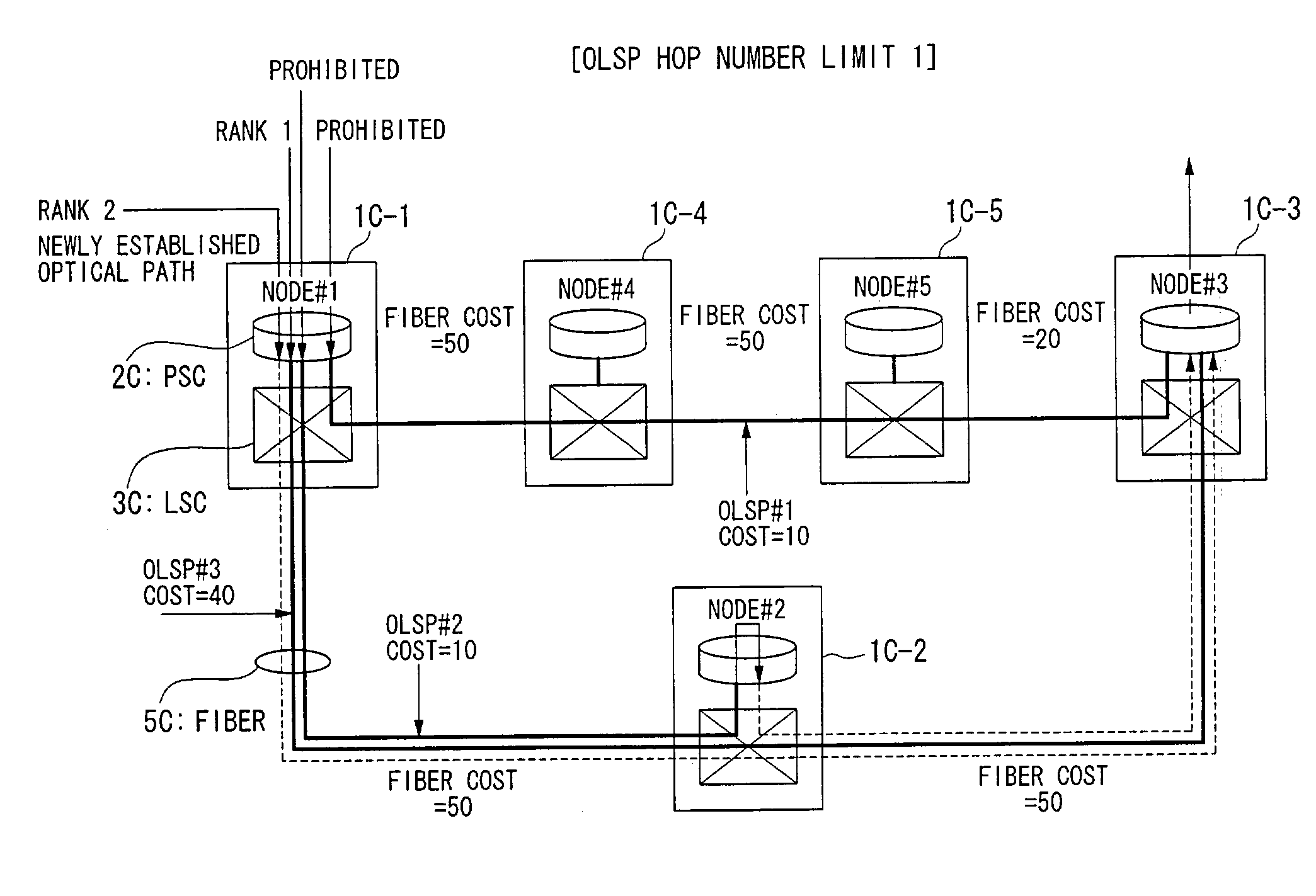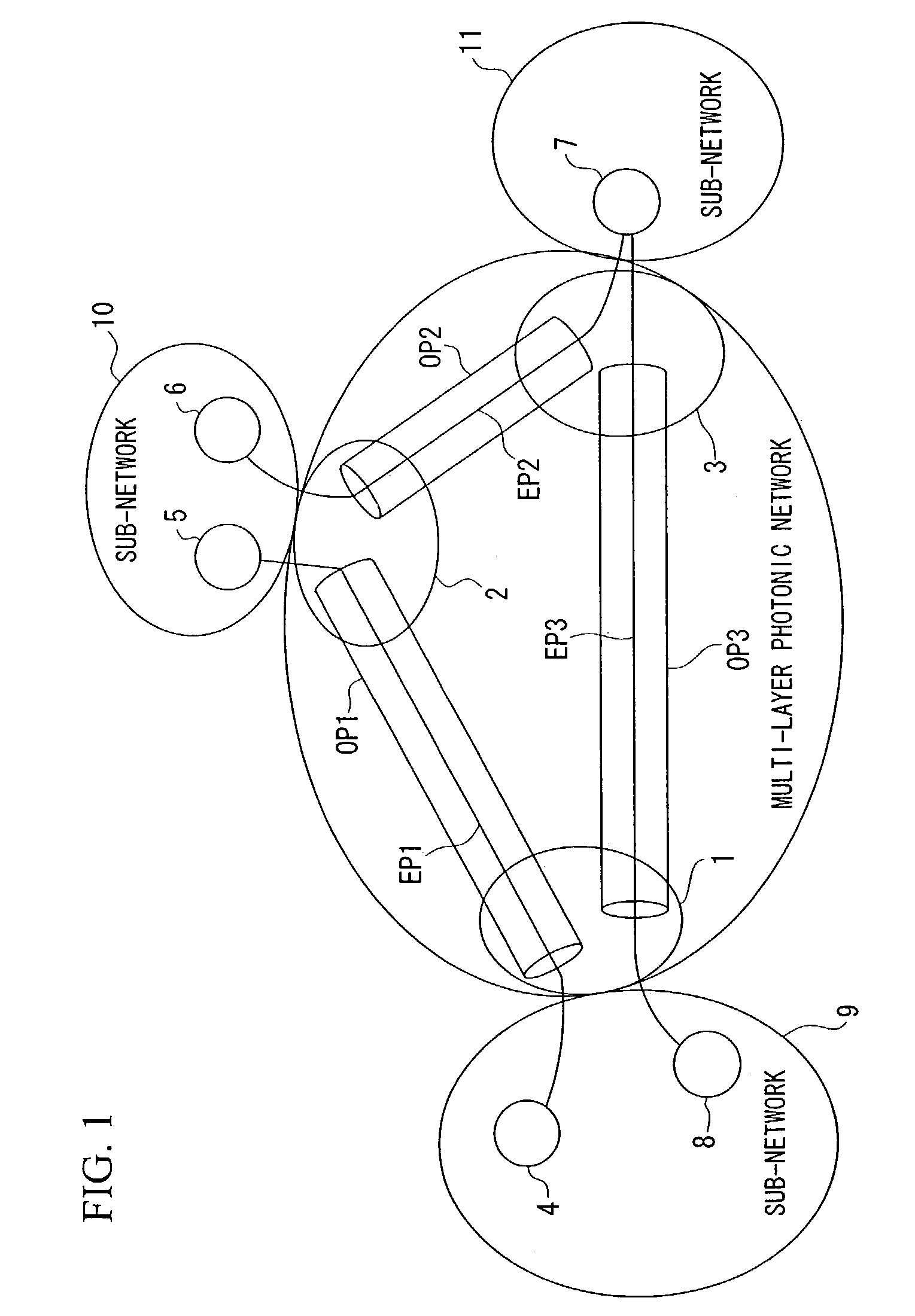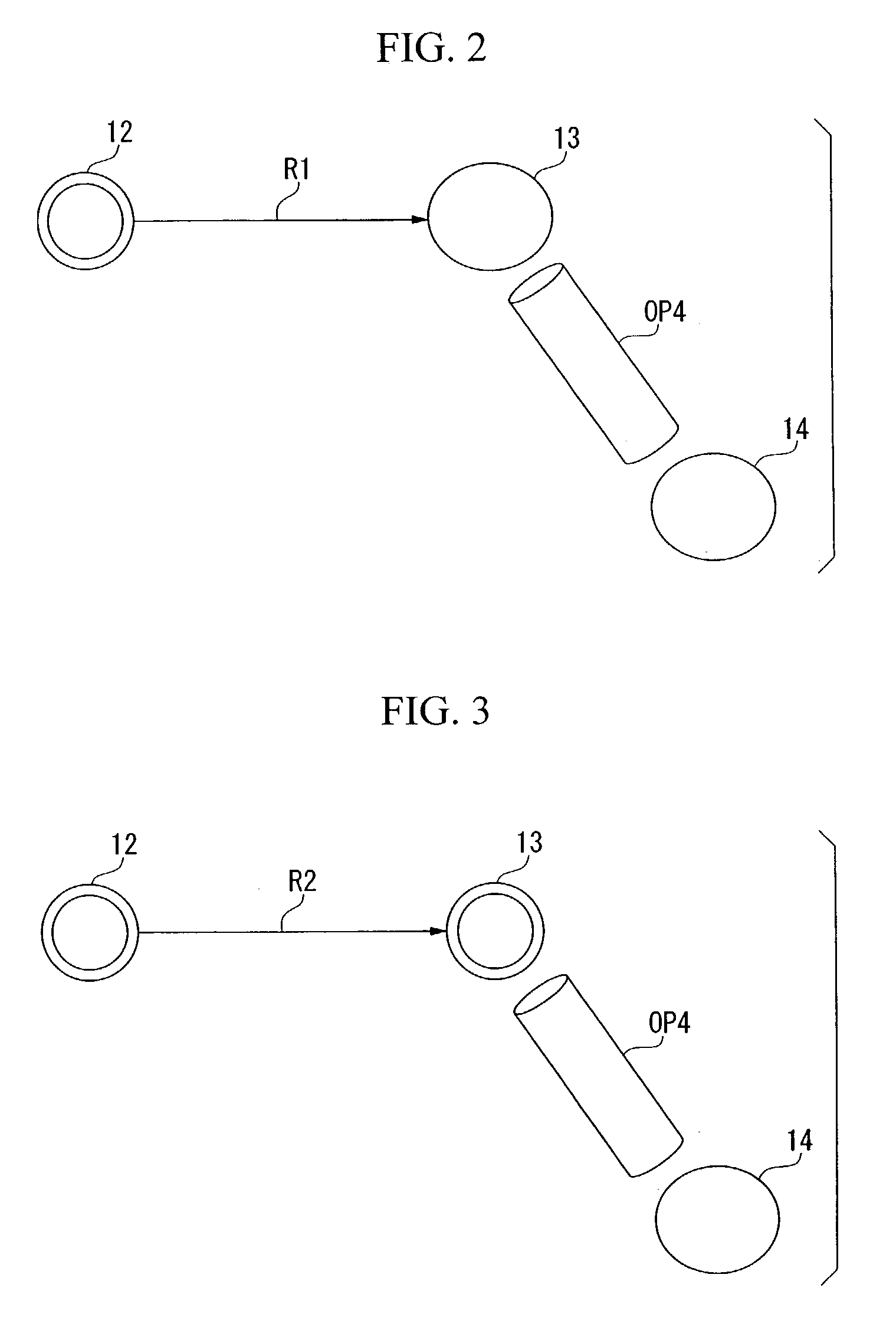Node used in photonic network, and photonic network
a photonic network and node technology, applied in the field of photonic networks, can solve the problems of not being able to freely vary the optical path, not being able to make the best possible use of o-lsp resources, and not being able to freely modify the o-lsps according to the needs of the user,
- Summary
- Abstract
- Description
- Claims
- Application Information
AI Technical Summary
Benefits of technology
Problems solved by technology
Method used
Image
Examples
Embodiment Construction
[0275]The first through the fifth preferred embodiments of the multi-layer photonic network according to the present invention will now be explained with reference to FIG. 1. FIG. 1 is a diagram showing the overall structure of the multi-layer photonic network of these first through fifth preferred embodiments.
[0276]As shown in FIG. 1, each of these preferred embodiments is a multi-layer photonic network, comprising a plurality of sub-networks 9 through 11 which perform switching and transfer in packet units, optical paths OP1 through OP3 which are O-LSPs which connect these sub-networks 9 through 1, and nodes 1 through 3 which terminate these optical paths OP1 through OP3; and, in addition to the nodes 1 through 3 which are LSCs which are capable of switching in units of optical wavelengths at both ends of the optical wavelength links which consist of the optical paths OP1 through OP3 and the nodes 1 through 3, there are provided respective border routers 4 through 8 as nodes which...
PUM
 Login to View More
Login to View More Abstract
Description
Claims
Application Information
 Login to View More
Login to View More - R&D
- Intellectual Property
- Life Sciences
- Materials
- Tech Scout
- Unparalleled Data Quality
- Higher Quality Content
- 60% Fewer Hallucinations
Browse by: Latest US Patents, China's latest patents, Technical Efficacy Thesaurus, Application Domain, Technology Topic, Popular Technical Reports.
© 2025 PatSnap. All rights reserved.Legal|Privacy policy|Modern Slavery Act Transparency Statement|Sitemap|About US| Contact US: help@patsnap.com



